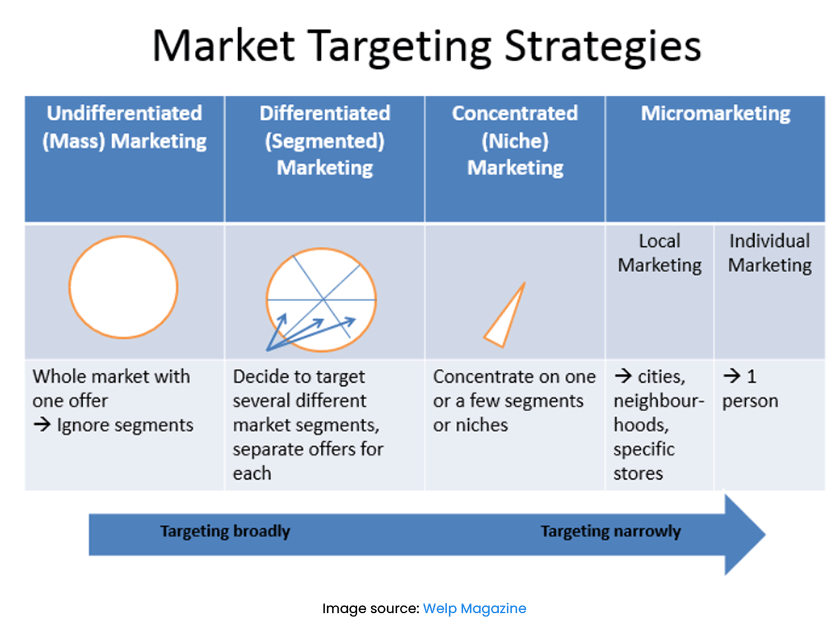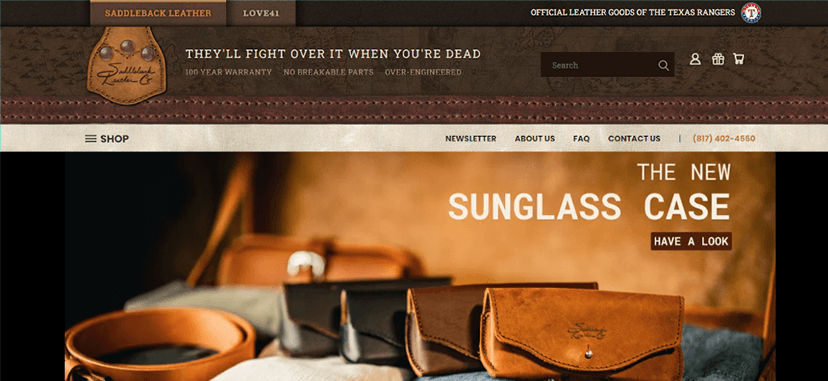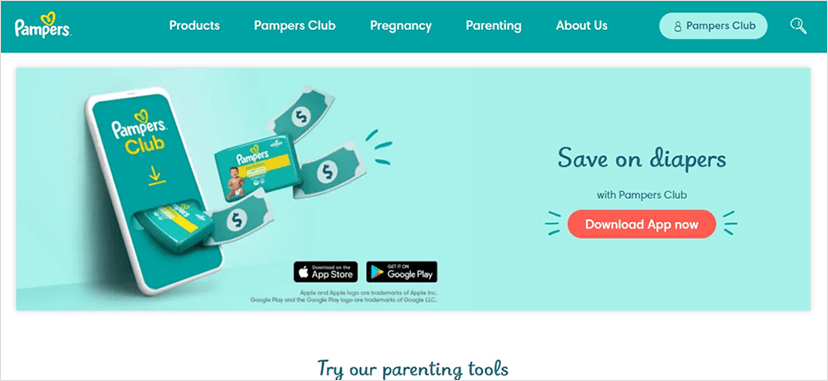
Click the button to start reading
Small Audience, Big Results: Unlocking the Power of Concentrated Marketing
You’re standing in the middle of a crowded marketplace, shouting out your message to anyone and everyone who will listen. But as you look around, you realize that everyone else is doing the same thing. How can you possibly stand out in all this noise?
The answer lies in concentrated marketing. Rather than trying to be everything to everyone, this strategy involves focusing on a specific group of people and catering to their unique needs and preferences. Quite easily, you can distinguish your brand from the competition and establish yourself as the go-to choice for your target audience.
In this article, we’ll define concentrated marketing and highlight concentrated marketing strategies. Along the way, we’ll share real-world examples of companies that have successfully used concentrated marketing to achieve massive growth and dominate their markets.
But first, let’s map out the main approaches to targeting markets.
Which way to target? The four types of market targeting strategies.
Knowing market targeting strategies can help you understand why certain tactics are chosen.

Undifferentiated marketing, otherwise called mass marketing, has no targeting at all. It’s a strategy that involves creating a single marketing message and product to appeal to as many customers as possible. From this perspective, everyone is a potential customer. This approach is often relevant for products with a broad appeal, such as basic food staples or household cleaning products.
Differentiated marketing, also known as segmented marketing, involves targeting different segments of the market with tailored messages and products. This strategy recognizes the different needs of various groups of customers and seeks to meet those needs with targeted efforts.
Concentrated marketing, or niche marketing, targets a very specific segment of the market with a highly specialized product or service. When opting for this approach, you position your products to appeal to a smaller, more specialized audience (more on this in a second).
Micro marketing, also known as individual or one-to-one marketing, takes your efforts a step further than concentrated marketing. It uses highly personalized marketing messages and products for individual customers or small groups of customers. This approach requires extensive customization and is widely spread in industries such as financial services or healthcare.
What is concentrated marketing?
Concentrated marketing, or niche marketing, is a strategy that involves focusing all marketing efforts on a single, well-defined segment of the market.
This approach allows companies to tailor their products and messaging to a very specific audience. As a result, they gain a better chance of achieving higher customer satisfaction and stronger brand loyalty.
Concentrated marketing is like a tailor who customizes clothing to fit each customer’s unique shape and style. Just as a tailor takes measurements to create a perfect fit, a business that uses concentrated marketing tailors its offerings to fit the unique needs of its audience.
No doubt, a well-tailored suit can make a person look and feel their best. Similarly, a well-executed concentrated marketing strategy can help a business stand out from the competition and attract loyal customers.
To put it differently, concentrated marketing is like being a big fish in a small pond. You may not have the biggest market share, but you can dominate the space you operate in.

Concentrated marketing vs. differentiated marketing
The main difference between concentrated and differentiated marketing strategies is the scope of the market you aim to enter. Concentrated marketing is based around a narrow segment of the market, while differentiated marketing targets multiple segments of the market.
Another major difference is the level of customization you use in each approach.
Concentrated marketing requires a high level of customization, as businesses must tailor their marketing efforts to the specific preferences of their target audience. Differentiated marketing also requires customization, but on a broader scale, as businesses work with multiple segments of the market.
Concentrated marketing strategies that work
If you look more attentively, you’ll likely find niches that are underserved and overlooked. You can pick one of these niches and dominate it. By the way, research shows that companies that experience growth tend to adopt niche marketing more frequently than other businesses.
Here are some common types of concentrated marketing strategies:
Local Marketing
This strategy concentrates on a particular geographical area or region. A business may use this approach to cater to the needs of a specific local community.
Demographic Marketing
In this case, companies target customers based on specific demographic factors such as age, gender, income, or education level. For example, a company may target high-income professionals with luxury products or services or choose to sell solely to teenagers.
Product Specialization
Do you have a narrow range of specialized products or services? Product specialization strategy might be the right fit for you! For example, a company may specialize in selling high-end sports equipment for a particular sport or activity.
Price Specialization
Price specialization is another concentrated marketing strategy example. It focuses on offering products or services at a particular price point. Thus, a company may target budget-conscious consumers with low-priced products.
Let’s now see each of these strategies in action. Next, we’ll look into specific examples of concentrated marketing.
Learning from the pros: five examples of concentrated marketing strategies.
Here are successful concentrated marketing examples to learn and get inspiration from.
1. Saddleback Leather: serving those who prefer quality and craftsmanship.

Saddleback Leather is a small Texas-based company that makes high-quality leather goods, such as bags, wallets, and accessories. Instead of trying to appeal to everyone, Saddleback Leather focuses on a narrow segment of the market: customers who prefer quality and craftsmanship over price.
To appeal to this segment, Saddleback Leather emphasizes the durability and longevity of its products, which are made from top-quality materials and handcrafted by skilled artisans.
They use targeted messaging that emphasizes the quality of their products and the care that goes into making them. And they sell their products at a premium price point to reflect their value.
By focusing on this niche market, Saddleback Leather has built a loyal customer base willing to pay a premium for products that will last a lifetime.
2. Warby Parker: stylish eyewear at an affordable price.

Warby Parker, an eyewear company, took the opposite direction in concentrated marketing. They’ve disrupted the eyeglasses industry by targeting a younger, more fashion-conscious audience who are looking for cost-effective options. By offering stylish, affordable glasses online, Warby Parker has become a popular alternative to traditional eyewear brands.
3. Lululemon: selling athletic wear designed specifically for fitness activities.

This athletic apparel brand provides another example of concentrated marketing. It has become the go-to choice for yoga enthusiasts and fitness lovers by targeting a specific, health-conscious audience. Lululemon has built a strong brand by creating high-quality, stylish workout gear that resonates with its target audience,
Their products are designed with functionality and comfort in mind, and they use high-quality materials to ensure that their clothing stands up to even the most intense workouts.
Overall, Lululemon’s success demonstrates the power of niche marketing. Markedly, it demonstrates the importance of creating products that fill in a gap for a particular group of consumers.
4. Pampers identifies a social cause that truly matters to its core audience.

Pampers, the popular baby and toddler brand, launched a heartwarming social media campaign called #ThankYouMidwife. The aim of the campaign was to thank midwives for their invaluable role in bringing new life into the world.
The #ThankYouMidwife campaign encouraged people to share their stories of appreciation for midwives on social media using the hashtag #ThankYouMidwife. For every post shared, Pampers pledged to donate £1 to the Royal College of Midwives Benevolent Fund.
The campaign was an instant success, generating nearly 14,000 thank-you messages in the first week alone.
By engaging with a social cause that resonated deeply with its target audience, Pampers was able to increase brand awareness and loyalty while also making a positive contribution to society through charitable donations.
5. The Lash Lounge specializes in eyelash extensions.

The Lash Lounge is a salon chain offering a range of styles and techniques to enhance natural lashes. Their trained lash stylists work with clients to create a customized look that fits their eye shape and personal style.
What’s more, they provide education and training for those who are interested in becoming lash stylists.
Thus, this level of specialized services has helped the Lash Lounge to stand out from other salons and become the perfect destination for those looking to enhance their lashes.
Conclusion
Don’t let your business get lost in the crowd.
With niche marketing, you’ll have the confidence to stand out and deliver products and services that customers can’t resist.
By understanding your target audience’s lifestyle, preferences, and values, you’ll be able to design and create products that truly resonate with them. And the best part? You won’t have to go head-to-head with the big players.
Concentrated marketing allows you to carve out your unique market space and build a brand that customers fall in love with.
















